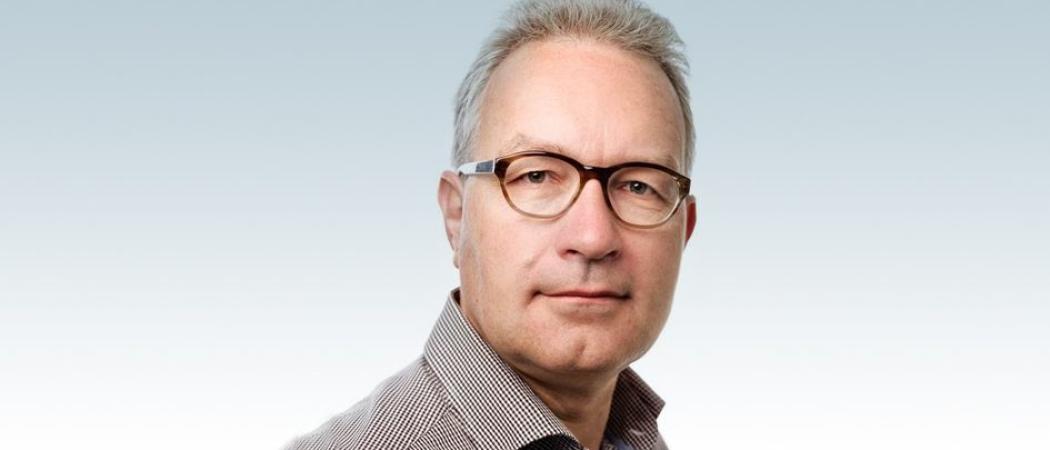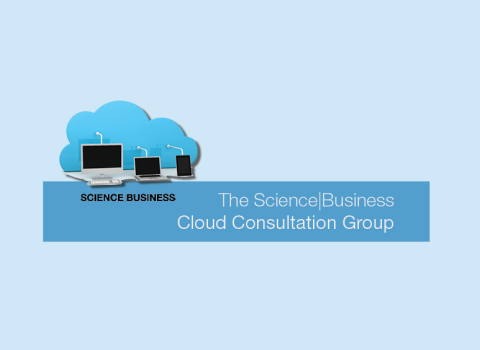EU’s Horizon Europe plans to step up the drive to expand science cloud services in Europe

Erik Huizer, CEO of GÉANT
In its new, €94.1 billion research plan for the 2020s, the European Commission included some ambitious language about a project to link all European labs to a public “cloud.” That project, called the European Open Science Cloud, will be a game changer for GÉANT, says Erik Huizer, CEO of the non-profit, dedicated network that delivers services for Europe’s research and education community.
“The investment is huge,” Huizer, who became CEO of GÉANT in July 2017, said in an interview. “We need to be there to support the EOSC and the EDI (the European Data Infrastructure) with the infrastructure, identification and authorisation, cloud procurement and cyber-security services. We will also have a broader remit and broader distribution.”
Backed by €600 million from the European Commission, the EOSC aims to enable 1.7 million researchers across Europe to access and analyse each other’s data, while the EDI is designed to ensure Europe has the high-bandwidth networks and the supercomputing capacity necessary to access and process large datasets stored in the EOSC. In its Horizon Europe research plan released June 7th, the Commission described the project as providing “Europe’s research communities with the next generation of data services for harvesting, storing, processing…and sharing big science data.”
For GÉANT, which has interconnections with 38 national research and education network (NREN) partners, “the science cloud opens up whole new areas and enables us to take our services to the next level,” says Huizer. “It opens up new distribution channels and enforces standards that will lead to a broader pick-up of our services, with higher demand for us to deliver quality, not only in the network itself, but especially in the areas of trust, security and e-identity.”
Expanding the network
As the cloud project takes shape, GÉANT, with help of the European Commission, is investing approximately €50 million in a new fibre network in eastern and southern EU countries to support the EDI and help integrate researchers on the bloc’s periphery into a more open and collaborative research community. “In Western Europe, we have a fibre core network, but in some southern and eastern countries we use a lot of leased lines and fibre is expensive,” Huizer noted. “I am talking to a lot of Ministers in these countries, together with the head of the NREN (national research and education networks), about this European investment and the need for them to also invest locally. It only makes sense if you have fibre end-to-end. There is no point in having a three-lane highway that ends in a slow track.”
Once the EOSC is underway at the end of this year, GÉANT hopes to be leading procurement of infrastructure-as-a-service (IaaS), using bulk buying to secure a good price and favourable conditions on data storage and processing from the major commercial cloud providers, such as Amazon, Google and Microsoft. Although he is sympathetic to the growing concern about the market power held by the major Internet platforms, Huizer sees these companies playing a central role in delivering the EOSC. “There is a lot of concern there, but I don’t see how you can avoid them. You have to follow the public procurement process and frankly the EOSC is not the way to establish a European cloud industry,” he said. “If Europe wants to become significant in the cloud industry it needs to aim for something unique, like guaranteed data protection.”
Having been inducted into the Internet Hall of Fame in 2014, after decades involved in the development of the Internet, Huizer is concerned about the winner-takes-all dynamic online. “Facebook, Google, Amazon and others have outgrown regional issues; they are now a global issue,” he said. “Zuckerberg’s appearance in front of the European Parliament was a complete farce. The world has a big problem with the major Internet platforms.”
Drawing on his experience with the Internet, Huizer highlights the importance of a bottom-up approach to the development of the EOSC. “It needs to get scientists involved in the standardisation processes,” he stressed. “Not even biologists can reach a consensus on how to organise data, yet we need to build a consensus between biologists, theoretical physicists, humanities scientists and others.”
Unanswered questions
This is just one of many challenges the science cloud will need to overcome. “The biggest question is how do we create the data infrastructure,” Huizer added. “How much standardisation do we need and how much freedom do we give researchers to organise their data. Can we maintain the data repositories if they keep growing? How do we assure that scientists make their data available, open and free? And when do we declare data obsolete? When can we remove it safely? It will be very expensive to store large volumes of data indefinitely.”
To answer such questions, Huizer calls for the creation of an Internet Engineering Task Force for data. “You would assemble a data engineering task force in which any researcher who is interested can participate,” he suggested. “A proposed standard needs to have two independent implementations before it can become a draft and then when it has four independent implementations, it can move to final. This process should not be dominated by big companies or by the e-infrastructures, such as GÉANT.”
To prevent the EOSC being weighed down with the cost of storing vast quantities of obsolete data, Huizer proposes an automated approach in which an algorithm is used to spring-clean the system. “If data hasn’t been accessed for five years, then it at least should be taken off line,” he argued. “We need a consistent model that works across science – you can’t have different disciplines arguing about how long to keep their data.”
Robust cyber-security will also be critical to the success of the EOSC, partly to assure scientists that they will receive appropriate recognition for the data and methodologies they generate. “We need to ensure that an obscure company can’t use data from the EOSC to file patents in a third country,” Huizer noted.
Although he is convinced research teams will ultimately benefit greatly from an open science cloud, Huizer believes it will be necessary for the funding bodies to make grants conditional on participating in the EOSC. “There is a very high probability that the financial lever - the stick - will work,” he said. “The carrot will come later when your researchers can profit from large scale of research. You need a leap of faith. But we may also need to compensate the front-runners with recognition.”
‘Not invented here’
Although the European Commission has successfully convinced the EU member states and the major players in European science to back the EOSC, advocates will need to keep promoting the concept to ensure it is not hijacked by vested interests or held back by inertia, a lack of trust or a “not invented here” syndrome. As a cautionary tale, Huizer points to the way in which most MOOCs (massive open online courses) have floundered because each institution wanted their own offering, rather than working with others.
Huizer would like the goal of the EOSC to be more clearly defined, so that policymakers can articulate what the science cloud is all about in a few sentences. “Everybody has a clear picture of what the EOSC is, but nobody has the same picture,” he said. “The EDI is very clearly defined, although that is much more technical, while the EOSC is 90 per cent about getting people to work together.”
To sell the EOSC politically, Huizer would frame the initiative in the context of the major challenges facing humanity, such as a scarcity of energy, a scarcity of materials, a scarcity of food and an aging population. “To solve those challenges we need to use creativity and ingenuity and researchers’ brains,” he noted. “We need to make sure people can build on each other’s results, so we need open access to scientific data.”
Given the global nature of the grand challenges, Huizer believes it should be a high priority to integrate the EOSC into similar initiatives elsewhere in the world. “Although one of the political goals may be to strengthen Europe’s position in the world, we need to harness all the creativity, all the thinking power in the world,” he said. “We can’t see it only through a regional lens.”






 A unique international forum for public research organisations and companies to connect their external engagement with strategic interests around their R&D system.
A unique international forum for public research organisations and companies to connect their external engagement with strategic interests around their R&D system.